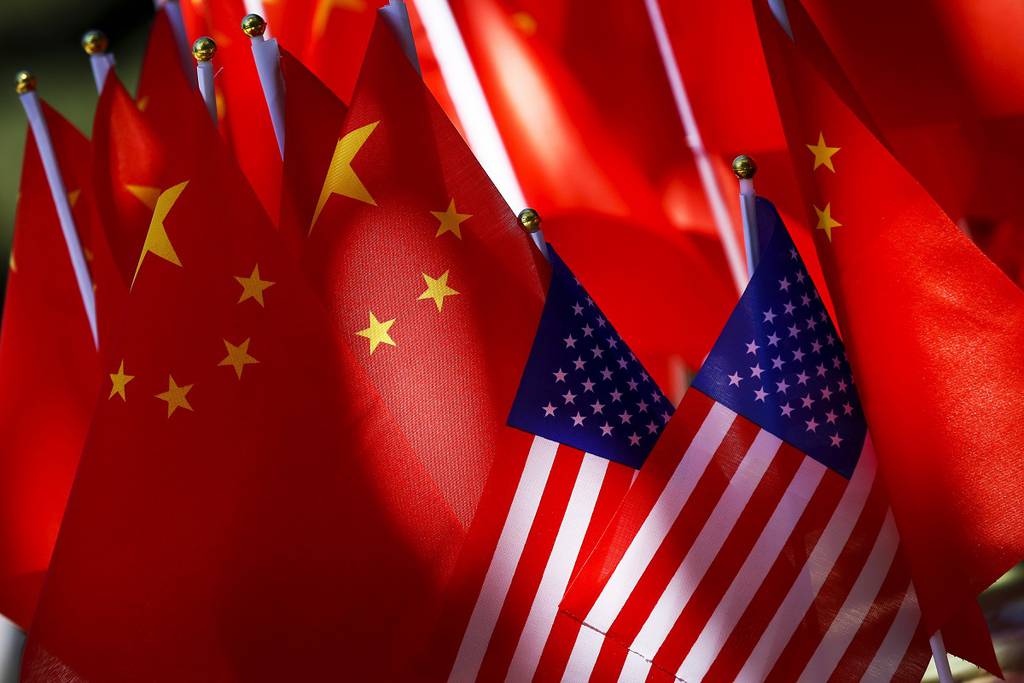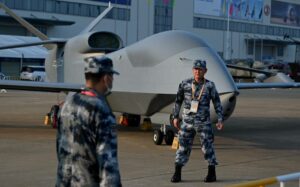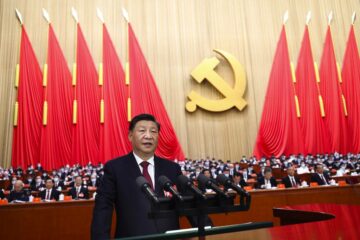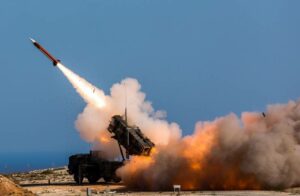
A study earlier this year asserted China has a “stunning lead” in essential technologies. And it wasn’t the first time this claim has been made.
But are these claims based in reality? When assessing the global impact and reach of American companies like Amazon, Apple, OpenAI, Boeing, Moderna, Microsoft and Google, it’s not immediately clear the United States is lagging in technological innovation.
But the challenge is understanding exactly how to measure a “technology competition” or “strategic competition.” Typically, competitions involve scores, winners and losers. But how does one keep score in technology competition? Is it the number of patents, academic publications, leading educational institutions, or multibillion-dollar companies? Or is the appropriate scoring system a more complex mixture of these, and other, factors?
The competition between the U.S. and China is a multi-dimensional contest involving technological, economic, military, and political elements. To accurately assess the U.S.’s standing in this competition, we need to shift our focus from measures (raw numerical data) to metrics, which offer meaningful interpretations of these numbers. This pivot illuminates the contrasts between a free-market economy and a state-driven one.
To determine who’s winning a technology competition, it’s tempting to rely on conventional markers of scientific progress, such as scientific citations or patents, because they are objective and quantifiable. But doing so risks ignoring other factors with major implications for the outcome of a U.S.-China technology competition.
These metrics require more sophisticated measurement, interpretation, and analysis, which capture variation in quality, context, implementation and impact. If the U.S. focuses merely on trying to surpass China on individual measures of technological progress it will likely achieve empty victories yet fail to advance its national security interests.
Take, for example, attempts to measure U.S. and Chinese progress in the field of artificial intelligence. China’s has a large number of AI scientific articles and patents, suggesting Beijing’s global leadership in this area.
However, the U.S maintains a strong foothold in advanced AI developments, with organizations like OpenAI, Microsoft, and Alphabet leading in large language model creation and diffusion. These organizations are part of a broader innovation ecosystem that allows new technologies to thrive and be widely adopted throughout the global economy. U.S. tech unicorns — start-ups valued over a billion dollars — and the venture capital firms that back them signal both financial success and significant technological advancement.
In this thriving open market, a product of the U.S.’s commitment to an open society and the free exchange of ideas, metrics like commercial success, technology adoption and real-world impact become more telling than raw measures. These metrics, in the context of the strategic competition with China, underline the U.S.’s penchant for turning research into impactful, scalable innovations.
Focusing on metrics instead of measures will allow DoD officials to correctly view the development of emerging technology as a means to achieving specific policy or military ends. For example, as the DoD invests to develop technology within its 14 Critical Technology Areas, metrics should be developed to track progress toward filling specific operational demands.
Shifting the focus to metrics will also offer a more accurate picture of U.S.-China technological competition and capture critical U.S. strengths. While China boasts a population over four times that of the U.S. and a rapidly growing economy, by focusing on metrics, the U.S. can leverage its advantages. Features inherent to the U.S innovation system — robust IP protection, the prospect of high returns to innovation and strong government-university-industry linkages — stimulate creativity, encourage innovation, and foster entrepreneurship.
Furthermore, the U.S. strives, though imperfectly, to offer opportunities to everyone who desires them, eschewing artificial barriers and quotas and avoiding intellectual conformity. This commitment fuels a dynamic, diverse workforce that is a wellspring of ingenuity and innovation.
Focusing on these distinctively American characteristics would move the perspective from a strictly measure-based competition, where quantity can overshadow quality, to a nuanced, metrics-based view that links means to ends. This shift would allow the U.S. to leverage its strengths, uphold its core values, and lay the groundwork for navigating and succeeding in this strategic competition.
Jon Schmid is a political scientist at the nonprofit, nonpartisan RAND Corp.
- SEO Powered Content & PR Distribution. Get Amplified Today.
- PlatoData.Network Vertical Generative Ai. Empower Yourself. Access Here.
- PlatoAiStream. Web3 Intelligence. Knowledge Amplified. Access Here.
- PlatoESG. Automotive / EVs, Carbon, CleanTech, Energy, Environment, Solar, Waste Management. Access Here.
- PlatoHealth. Biotech and Clinical Trials Intelligence. Access Here.
- ChartPrime. Elevate your Trading Game with ChartPrime. Access Here.
- BlockOffsets. Modernizing Environmental Offset Ownership. Access Here.
- Source: https://www.defensenews.com/opinion/2023/08/15/rethinking-whos-winning-the-us-china-tech-competition/
- :has
- :is
- :not
- :where
- 14
- 70
- a
- academic
- accurate
- accurately
- Achieve
- achieving
- adopted
- Adoption
- advance
- advanced
- advancement
- advantages
- AI
- allow
- allows
- Alphabet
- also
- Amazon
- American
- an
- analysis
- and
- Apple
- appropriate
- ARE
- AREA
- articles
- artificial
- artificial intelligence
- AS
- assess
- Assessing
- At
- Attempts
- avoiding
- back
- barriers
- based
- BE
- because
- become
- been
- between
- Billion
- boasts
- Boeing
- both
- broader
- but
- by
- CAN
- capital
- capture
- challenge
- characteristics
- China
- Chinas
- chinese
- claim
- claims
- clear
- commercial
- commitment
- Companies
- competition
- Competitions
- complex
- contest
- context
- contrasts
- conventional
- Core
- Core values
- Corp
- creation
- creativity
- critical
- CTO
- data
- demands
- Determine
- develop
- developed
- Development
- developments
- Diffusion
- DoD
- does
- doing
- dollars
- dynamic
- Earlier
- Economic
- economy
- educational
- elements
- emerging
- Emerging Technology
- encourage
- ends
- entrepreneurship
- essential
- everyone
- exactly
- example
- exchange
- factors
- FAIL
- Features
- field
- filling
- financial
- financial success
- firms
- First
- first time
- Focus
- focuses
- focusing
- For
- Foster
- four
- Free
- from
- fuels
- Global
- Global economy
- groundwork
- Growing
- High
- How
- How To
- HTTPS
- ideas
- if
- images
- immediately
- Impact
- impactful
- implementation
- implications
- in
- individual
- ingenuity
- inherent
- Innovation
- innovations
- instead
- institutions
- intellectual
- Intelligence
- interests
- interpretation
- into
- Invests
- involve
- involving
- IP
- IT
- ITS
- jpg
- Keep
- lagging
- language
- large
- lay
- Leadership
- leading
- Leverage
- like
- likely
- links
- Losers
- made
- maintains
- major
- Market
- meaningful
- means
- measure
- measurement
- measures
- Metrics
- Microsoft
- Military
- mixture
- model
- moderna
- more
- move
- National
- national security
- Nature
- navigating
- Need
- New
- New technologies
- Nonprofit
- number
- numbers
- objective
- of
- offer
- officials
- on
- ONE
- open
- OpenAI
- operational
- opportunities
- or
- organizations
- Other
- our
- Outcome
- Outlook
- over
- part
- Patents
- perspective
- picture
- Pivot
- plato
- Plato Data Intelligence
- PlatoData
- policy
- political
- Product
- Progress
- prospect
- protection
- publications
- quality
- quantity
- rand
- rapidly
- Raw
- reach
- real world
- Reality
- rely
- require
- research
- returns
- Reuters
- risks
- robust
- s
- scalable
- scientific
- Scientist
- score
- scores
- scoring
- security
- shift
- should
- Signal
- significant
- So
- Society
- sophisticated
- specific
- start-ups
- States
- Strategic
- strengths
- strives
- strong
- Study
- success
- such
- surpass
- system
- tech
- technological
- Technologies
- Technology
- than
- that
- The
- Them
- These
- they
- this
- this year
- though?
- thriving
- throughout
- time
- times
- to
- toward
- track
- Turning
- typically
- u.s.
- underline
- understanding
- United
- United States
- Uphold
- valued
- Values
- venture
- venture capital
- venture capital Firms
- victories
- View
- we
- when
- which
- while
- WHO
- widely
- will
- winners
- winning
- with
- within
- would
- year
- yet
- zephyrnet












